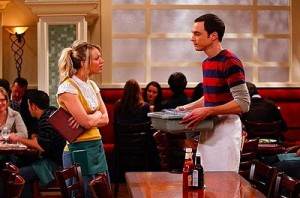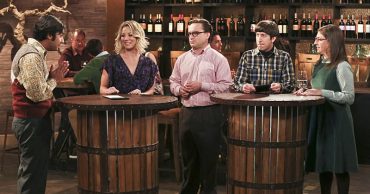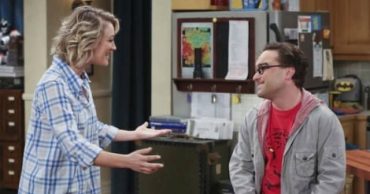
Just how much of the “science talk” in CBS’s long running comedy series, “The Big Bang Theory” is accurate? The show created by Chuck Lorre and Bill Prady follows the life and work of 4 brilliant scientists who have some trouble functioning socially. The show has evolved into a family show as the characters of Sheldon (Jim Parsons), Leonard (Johnny Galecki), Howard (Simon Helberg) and Raj (Kunal Neyyar). The 4 work at Caltech University. Sheldon and Leonard’s neighbor, aspiring actress Penny (Kaley Cuoco) helps the self-identified nerds navigate society.
Despite “The Big Bang Theory’s” comedy and endearing characters, it remains a science comedy at its core. It would seem like the use of such specific and advanced scientific theories discussed in the series would not be funny, but the brilliant writers, actors and consultants make it work. Surprisingly, the “science talk” in “The Big Bang Theory” is very accurate.
David Saltzberg
David Saltzberg is the man behind the science in “The Big Bang Theory”. Initially consulted by the show’s set designers to assure the sets, particularly Sheldon and Leonard’s apartment were accurate for 2 Caltech physicists, Saltzberg became a regular consultant to Chuck Lorre and staff in assuring the accuracy of the science used on the show. As the science is often used as a punch line, Saltzberg has even contributed to some of the comedy.
David Saltzberg teaches physics at UCLA. He holds a Bachelor of Physics from Princeton University, a PhD in Physics from the University of Chicago and a Post Doctorate degree from CERN (the European nuclear research facility). In his spare time, Saltzberg works with scientific balloons over Antarctica and works on the Large Hadron Collider in Switzerland.
David Saltzberg receives copies of the scripts to review and fact check or is asked to provide the science in the scripts. Saltzberg has said that he has developed an understanding of how the writers try to give the scripts a cadence so the comedy works. In addition, Saltzberg often creates the equations featured on the whiteboards in Sheldon and Leonard’s apartment and their Caltech offices. Physics students will sometimes write the show saying that a whiteboard equation is incorrect, but Saltzberg’s equations have never been disproven.
Saltzberg attends the show’s taping before a live audience in case last minute changes to the script are necessary. One time, he even came up with Sheldon’s line, “A little misunderstanding? Galileo and the Pope had a little misunderstanding”. When science is a big part of the episode, Saltzberg will attend rehearsal to help. He has also appeared in a cameo in Caltech’s cafeteria scene.
Mayim Bialik
When David Saltzberg needs a scientific backup, he has no further to look than the cast. Although most of the cast claim to nothing about science, Jim Parsons has proven that he does have a little helpful knowledge. Mayim Bialik who plays Parson’s love interest Amy Farrah Fowler actually has a PhD in Neuroscience so she can bring her knowledge of neuroscience and biology whenever necessary.
Famous Guest Stars
“The Big Bang Theory” has featured several guest appearances by real scientists. Not that they necessarily contributed to the script, but the bring a certain cache to the show and its legitimate interest in science. Neil de Grasse Tyson appeared as himself. Tyson upset Sheldon because he is the scientist who demoted Pluto to a dwarf planet. Bill Nye, the Science Guy, from the popular PBS science show appeared as himself. Ira Flatow, host of NPR’s “Science Today” interviewed Sheldon.
Mike Massimino accompanied Howard into outer space. Massimino is an astronaut who has been to outer space twice to make repairs to the Hubble Telescope. George Smoot is the Nobel Prize winning astrophysicist who turned Sheldon’s offer to collaborate. Elon Musk, the founder of Space X and Tesla volunteers at a soup kitchen on Thanksgiving with the gang. Steve Wozniak, Apple’s co-founder and Buzz Aldrin appeared on the show. Danica McKeller, Winnie from “The Wonder Years” appeared as a possible love interest to Raj. McKeller received a degree in mathematics from UCLA. Of course, Sheldon’s hero, the famous Dr. Stephen Hawking, has appeared a few times on the show including to sing “happy birthday” to Sheldon.
“The Big Bang Theory” may be so successful because the science is real. The writers do a wonderful job of incorporating science into the story and make it funny. The successful show may also have created some budding scientists. “The Big Bang Theory” and The Chuck Lorre Family Foundation created a $4 million Endowment for 20 low income students to attend UCLA to study STEM (science, technology, engineering and mathematics).
 Follow Us
Follow Us





